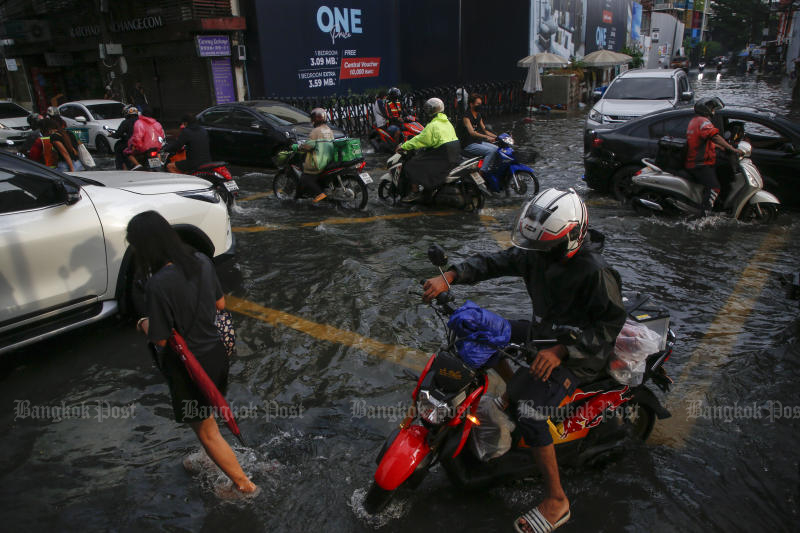
The Bangkok Metropolitan Administration (BMA) has outlined plans to use the new Bueng Nong Bon drainage tunnel to reduce flooding risks in the capital during the current rainy season.
The drainage tunnel in Prawet district and the Bang Ao pump station in Bang Na will help speed up the flow of excess water into the Chao Phraya River, deputy governor Wissanu Sapsompol said after inspecting the sites on Saturday.
He also visited the Klong Kled water intake station, which recently experienced an influx of eroded soil and is now under repair.
Mr Wissanu said the BMA would consider expediting the opening of completed drainage tunnels so that they can help mitigate flooding during the rainy season. They have the potential to protect 85 square kilometres of Bangkok from inundation, he added.
The Bueng Nong Bon tunnel is 5 metres in diameter and runs for 9.4 kilometres at a depth of 30 metres. Originating at the Nong Bon Swamp, it passes beneath the Nong Bon and Ta Chang canals, Srinakarin and Udomsuk roads, Sukhumvit 101/1 and the Bang Ao canal. Work on the tunnel is now 91.4% complete, according to the BMA’s Department of Drainage and Sewerage.
The tunnel is intended to address overflows on Udomsuk Road and Sukhumvit 101/1 and along the Bang Ao canal. This will benefit the districts of Prawet, Suan Luang, Bang Na and Phra Khanong as well as nearby areas, the department said.
The new tunnel will also support the Bueng Nong Bon reservoir, which has a storage capacity of 7 million cubic metres of water. It can take a day to drain out 5 million cubic metres of water before the reservoir is able to accommodate more rain.